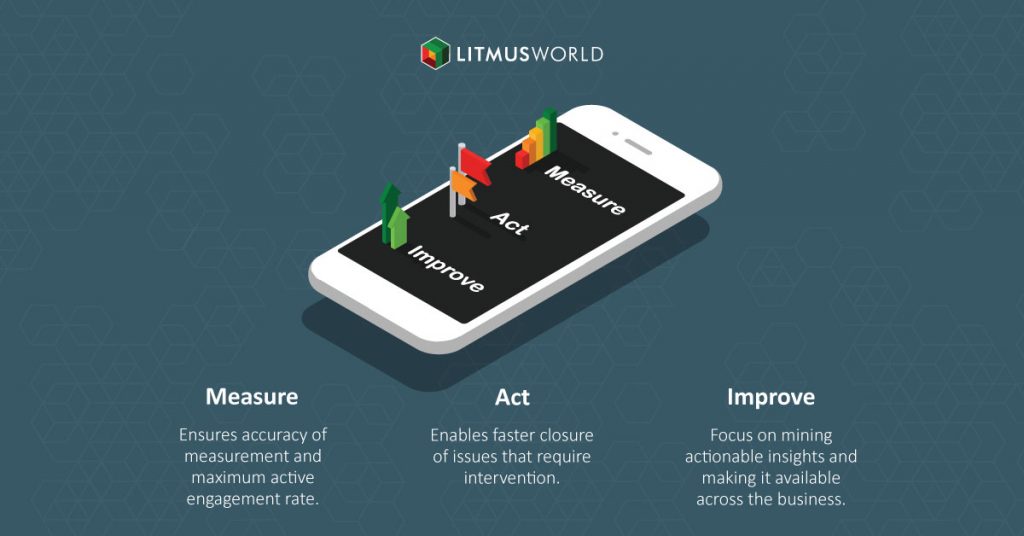Redefining Retail, One Moment At A Time.
Redefining Retail, One Moment At A Time.

The retail industry is constantly changing and there are always new challenges faced by the players in this competitive industry. Since 2017, there have been several major retail companies that have filed for bankruptcy and this phenomenon might continue through this year. Though it does seem kind of frightening, this is not the end of days for retail.
Although we have seen quite a lot of retail overhauls, there are also many major retailers that have managed to survive and even grow their businesses. They have proven to be able to face major challenges within the industry. What are some of the common challenges faced by them today?
Keeping up with ever-changing customer expectations
Problem
Customer preferences are always going to change and as a retailer, it is important for you to anticipate these changes and act before the storm hits the ship. What worked 5 years ago would not work today. So-much-so that what worked yesterday may not work today. Most retailers are seen losing revenues because they cannot anticipate the customer’s expectations and in-turn lose the game to the so-called ‘Internet Giants’. The reason for losing the business is not the advent of the internet but the incompetence of the retailers to live up to the customers’ expectations.

Solution
Listen! Yes, it is as simple as listening to the customers to begin the journey. You may want to periodically interact with them to understand how their expectations change over time. Understand the customer demographics and the thought behind purchasing the product. Target the critical areas and act accordingly. Brands like Bata have changed their fate around from over a decade ago where customers believed that Bata was not the most relevant shoe brand. Today they have regained their stand in the market and are competing head-on with their competitors and re-gaining their market share. Reason? They continuously listen to their customers and more importantly act on the feedback. They’ve changed their product lines and are constantly updating it with new and trending products every quarter. The quicker you listen, the faster you can act on the situation.
Driving Customer Loyalty
Problem
One of the common mistakes retailers make is letting their existing customers go, in expectations of attracting newer customers. The cost of acquiring new customers is higher than retaining existing customers. To convince ourselves, if we consider the research done by Frederick Reichheld, the inventor of the Net Promoter Score® (NPS), a 5% increase in the customer retention rate increases profit by 25% to 95%.
But another challenge that lies ahead of the retailers is that the customer loyalty margin is thin and losing them to an alternate brand is easier than keeping them glued.
Solution
Treat them as a part of your organisation! A customer is your bread and butter and it is always important to make them feel valued. They are your key stakeholders and they deserve a certain degree of attention and involvement. Think from a customer’s perspective – wouldn’t you want to give advice to a brand about the way they function? Wouldn’t you love it if you saw those changes happening as a result of your advice? This shows that the brand cares and is willing to go through great lengths to make things happen for you. This not only converts a customer to a loyalist but also builds brand advocacy. Always keep your channels of communication open with them. Not that you keep blasting cold SMS’ and Emails from your servers, but have contextual conversations with them.
Remember you have the data at your hand to create conversations with context and actively engage with your stakeholders. Make them believe that you are worried about them and that you want nothing but the best for them. Do not always focus on the amount on the sales receipt, try being consultants once in a while and see the customer lifetime value shoot up the charts!
A customer is your bread and butter and it is always important to make them feel valued.
Managing Internal Communications
Problem
Retail has complex operations and managing its internal communication is not an easy task. This challenge is mainly faced by large-scale retail companies with multiple divisions. Inefficient communication between divisions can disrupt business processes. Internal stakeholders are the face of the brand and they often have key insights that never reach the decision-makers.
Solution
A dedicated conversations platform that can enable conversations between both, internal and external customers! Having an ERP in place is not going to do the job for you. It is important for you to stay focused on the kind of conversations that help you gain actionable insights on business processes. Robust platforms like LitmusWorld are an ideal go-to platform for retailers like Croma, Raymond, Reliance Brands, Titan Eye Plus and many others. They have revolutionized the way the management interacts with the internal stakeholders. They have managed to increase the overall NPS® by ensuring that the employees are heard and their feedback is given equal weight in deciding the overall performance of the business. A boardroom discussion will never give you insights as to why a particular business is not working in a particular region and why business is booming in the other regions.
Retaining and engaging employees

Problem
Retail as an industry has seen the highest turn-over rate amongst the employee force delivering the last mile experience. Employees often believe that retail is a dead-end industry and they do not see any substantial improvements in their productivity. Their jobs are mundane and they lack motivation. Retaining the best of the best talent is difficult and thus the cost of retention is higher than the cost of acquisition.
With this idea in mind, the recruiters often let the old employees go and hire new talent. What these recruiters do not understand is that the cost of training new employees increases and eventually results in costing the brand big-bucks!
Solution
Gamification! Yes, that’s right. Gamify their experience and make sure that they are constantly engaged in activities. Shuffle their KRAs and see how the overall performance of the outlet increases. One of the common practices used by most retail giants is including The Net Promoter Score® (NPS) in their KRAs. We have seen employees, branch heads, zone heads and even the top-tier management coming to the office and the first thing they do is check for their Net Promoter Score® (NPS) for the month so far.
How does this help? They get defined action items for the day and also a benchmark from their peers to perform better. This is a constant source of motivation and incentivising the employees with the highest scores helps them get the reason to stay and perform better. There are organisations that decide the incentive structures of these employees based on the Net Promoter Score® (NPS) they receive from the LitmusWorld platform. Another benefit of gamification is that employees become self-learners as they learn from their own mistakes and look at others for inspiration. This reduces the overall cost of training and increases the working capital of the organisation.
Digital Disruption

Problem
Although the spending power of the average consumer has gone up, it does not reciprocate in the numbers seen but the financial reports of the retail giants? So where is this money going? It is going to the e-Commerce giants. As the number of competitors increases, the market share is bound to decrease, but if none of the players is making profits, should one believe that industry as a whole has no future and it is safer to ‘rat-out’ the ship before it sinks?
Solution
First, identify the root cause of this imbalance. The e-commerce giants entered the space with the idea of acquiring a customer base first and generating revenue later. Considering that the overall cost of making the product available to the masses is less due to lesser fixed costs, they are able to provide competitive pricing and thus we have seen a lot of customers migrate to the digital platform. But what differentiates the digital platform over a brick and mortar store is the customer experience.
As a consumer, if I get a better service experience in a store, I would rather walk into a store and pay a premium for that experience instead of going online and purchasing a product from somebody who is unknown to me and I have no idea what the intentions of the retailers are. Human touch is the key differentiator. People buy from stores not because they have faith in the product, but because the salesman has faith in the product that he is selling.
Contrary to popular belief, “Digitization did not kill retailers, poor customer experience did!”
Finding the best technology solution to handle the above challenges
Problem
Retailers are often able to define the problem statements but are unable to find the right solution that can help them tackle these challenges. They either stumble upon a solution that does not answer their queries or a solution that is too complicated to use or is just too overpriced for the value that they provide. Most often, there are different platforms that solve different challenges.
Solution
Information gathering is key. Find the right requirements and the challenges that you need to address. These challenges should not only include the current challenges but any potential challenges that may arise in the future considering the current trends. This ensures that you invest in the right technologies that safeguard your interest from a long-term perspective.

Step 1
Having identified the needs, the first thing that you need to do is put yourself in the end-users’ shoes and understand the usability of the platform. The end-user may not be technologically savvy and hence ease of use should be a major priority. Reluctance to the adoption of technologies can result in failed investments and will get you back to square one! Have you ever wondered why change management is a multi-billion dollar industry? Technology is not easy to adapt to. That is why a solution that is easy to use, that even a 6-year-old can make sense of, should be the top priority.
Step 2
The next step should be identifying the resources that are required both from your end and the vendor’s end and how well will the new systems integrate with the existing systems? Failed integrations push the project over by months, if not years. Thus, choose a vendor that has the experience of working with multiple industries and multiple businesses. This ensures that they will integrate with your existing processes, with minimal resource interventions from your end.
Step 3
The third and most important criteria for selecting a vendor should be the price-value graph. Is the vendor providing more value than what he is billing you for? This is exactly what the customer has in mind when they enter your store.

